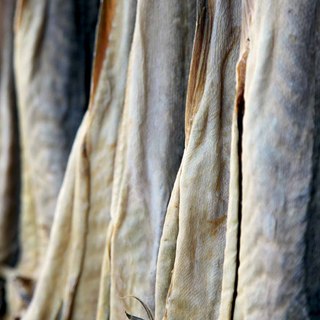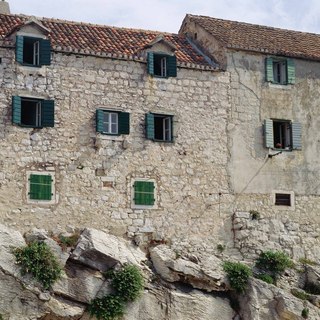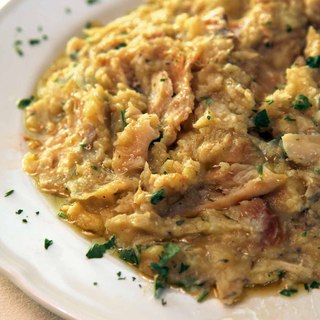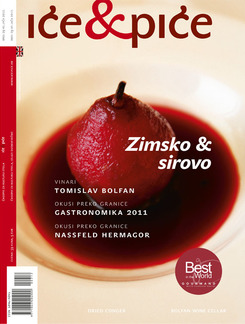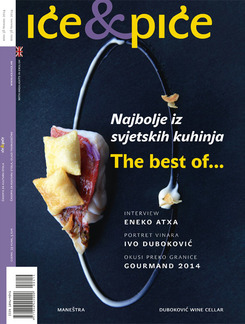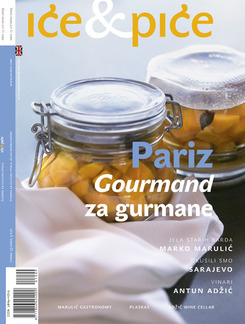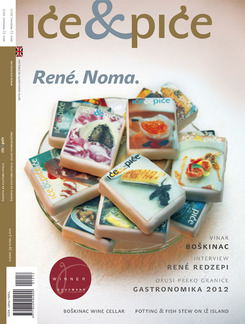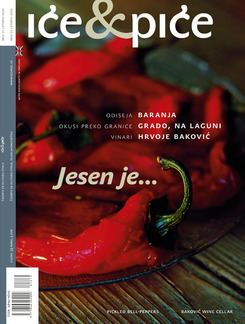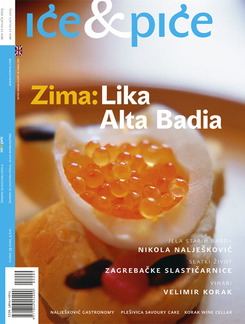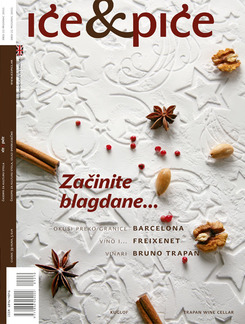Here and there along the whole street a mightily healthy belching roared like dull thunder and the Christmas carol like a frightened little bird halted at any verse it happened to be, at which a rough, strident bass or baritone roars out:
What’s that belching,
I’ve eaten stockfish
What’s that belching,
Stockfish in oil.
So, in that famed chapter Fighting Midnight Mass in Chronicle of Our Little Town wrote Miljenko Smoje. A naturalistic, somehow typically Smoje harsh story that, to tell the truth, tells rather of a rough old Split witticism than a charming Christmas image from a little-town Dalmatian idyll was and has remained my personal emotional timbre of Christmas and its inescapable delicacy of stockfish. I have no doubt at all that there are many more vivid and certainly more charming Christmas scenes than the image of some merrymaker who after several hours of elevenses and an extended lunch on Christmas Eve itself wanders his way burping home, but for me Christmas holidays and stockfish prepared in bianco with potato and seasoned liberally with olive oil – from the first pressing, with garlic and finely chopped parsley are all inextricably melded into one.
The first announcement of Christmas in my family, like elsewhere along the eastern coast of the Adriatic, was connected with purchasing stockfish, dried cod; these yellow splinters that irresistibly reminded me of billets of old dried olive wood that granny kept piled in an orderly way alongside the great wood stove. Sometimes father would bring it from the fine grocery store in Graz or Vienna, but most often it came from Bonačić, the cult, today resting in peace, mixed goods shop in the decumanus in Diocletian’s palace. Bakalar would be broken into several parts, and then soaked for three days in water in a large aluminium pot placed on the balcony. My grandmother, a several-generations Kaštela woman, did it in the old time way, which is to say that she cooked half the soaked stockfish in bianco, and the other half in brodetto. More precisely, with dried tomatoes and red paste. My favourite was always the white, well beaten and made in the manner of Venice. Unlike many other families, in my family in bianco was not made with milk but with cream, and I myself took over that old basic recipe with one novelty. Unlike my grandmother, and later my mother, who cooked the soaked and cut cod, and then cleaned it of the skin and bones, I was more inclined to do a thorough cleaning before the stockfish started to be cooked. In both cases, after the cod is cooked and cleaned, it is put into a large saucepan with potato cut into slices, garlic, a little parsley (some of the chopped fresh green leaf is left for sprinkling before serving) and olive oil. It is covered with water in which the cod was cooked, and placed on a gentle heat with occasional shakings of the pot. Because what goes for a vodka martini, according to James Bond – shaken not stirred - goes for bakalar and brodetto as well. The fish is then cooked until the potato is done. Everything that comes after that depend son the fancy and taste of the cook, but for me the classic manner of Venice was always the nicest. The pot in which the cod was cooked is tightly closed with an appropriate lid, and then wrapped in a tea-towel is heroically shaken until the cod has gone white and turned into a foamy pate, and the potato, absorbing the juices of the cod and the oil, has become completely turned into mash. Of course, there are many faster and easier ways, mashing the potato and cod with a fork or even doing it with a mixer, but believe me the difference in taste in the finished product is worth the physical effort of whipping the cod.
In a million ways
Stockfish, just like most traditional gastronomic icons, is prepared in a million ways all along the coast. In two books devoted to the gastronomic heritage of Dalmatia Gioia Galussi mentions the bacalla alla dalmata, which is prepared in an earthenware pot or saucepan with floured dried cod, slices of potato, crushed garlic, salted sardines, tomato sauce, onion... The recipe for stockfish in bianco is given in the Istrian way: the cod is soaked overnight and then beaten with a wooden stick, and it is recommended, after cooking in salted water with bay leaf and cleaning, to beat it again, until it becomes like a puree. Bakalar in the manner of Pula is closest to the Dalmatian version of white stockfish.
Numerous versions of the basic recipe also exist for red stockfish, stockfish done in brodetto. In this version, the red version, one adds to the cod, as well as the garlic, parsley, potato and olive oil, a combination of dried and pureed tomatoes with a little wine vinegar and a pinch of sugar, to tone down the acidity, as in sauce. Nor of course are other ingredients rarities, like pine nuts, raisins or black roasted olives and fillets of salted anchovies.
Biography of a fish that changed the world
Since stockfish came to this region in the 15th century from Venice – the historical merit, it is said, belongs to trader and captain Pietro Querina who was shipwrecked off the coast of Norway and became the first Venetian importer of stockfish. There are various Venetian versions, like pasticcia or fried (breaded) cod that made themselves at home in Istria and Dalmatia. But during the 20th century, and particularly in the more recent times, some other traditional recipes have been taken on, like the inevitable Portuguese cod a la Gomesa de Sa or numerous indigenous Basque dishes. But why Basque?
Because, as claimed by Mark Kurlansky, author of the book: Bakalar: biography of a fish that changed the world, they had for almost a thousand years their secret fishing grounds along the coasts of America and prepared dried, salted and smoked cod for the European tables, but also prepared it themselves in many ways. One of the most simple, and the favourite, is cod with pancetta and onion, prepared in a deep pan by sautéing all the ingredients over a gentle heat. Many American states and cities like Massachusetts and Boston have cod in their coats of arms. This is a reminder of the days of the pride and glory of the wholesalers in cod who thanks to the local fishing grounds and trade with Jamaica and Africa, i.e. the trade of cod for molasses from which rum was made, acquired vast fortunes. There is nothing to be wondered at then that the gastronomic heritages of those areas have numerous recipes with cod. One of the most popular is cod a la Rufus (borrowed from the book of Rufus Estes Good Things to Eat of 1911) with cod that is sautéd in melted butter with parsley, lemon juice, salt and pepper. Of course, the French gave their bit to the story of cod, and among the most highly favoured recipes is that for croquettes of morue (from the book La Véritable cousine de familie, 1925). The croquettes are fried in very hot oil from a mixture obtained by mixing chopped cod with béchamel. The cuisine of Lisbon with pride advertises its three hundred different ways of preparing cod, and along and across the western coasts of the Mediterranean it is as if every cooking culture has left its trace. For me, though, stockfish and white Christmas will always remain indelibly associated with Venetian stock fish na uje. With or without belching.
